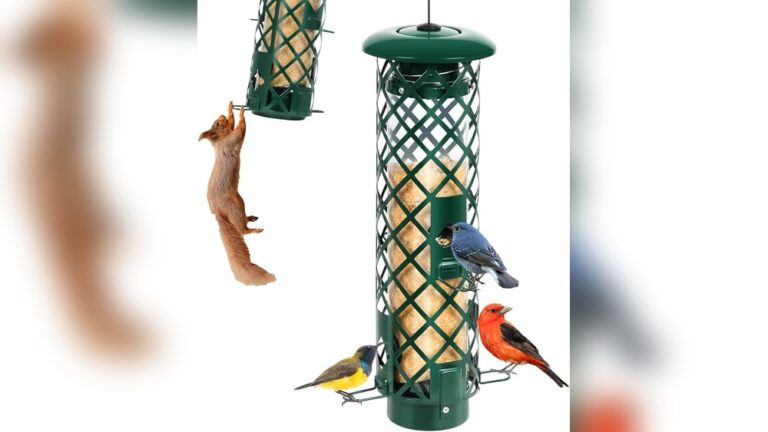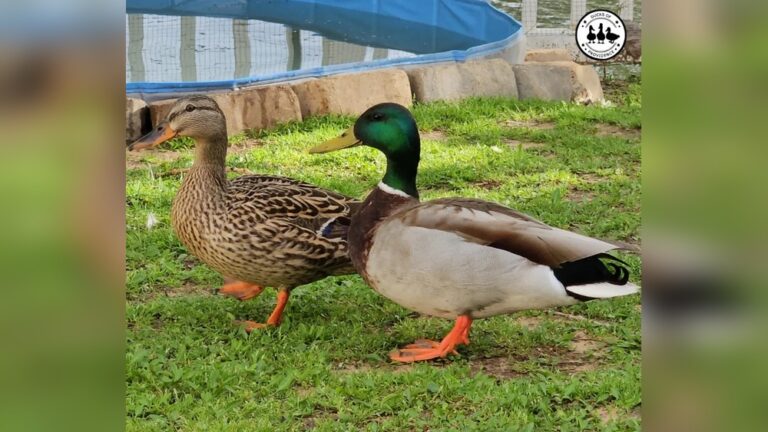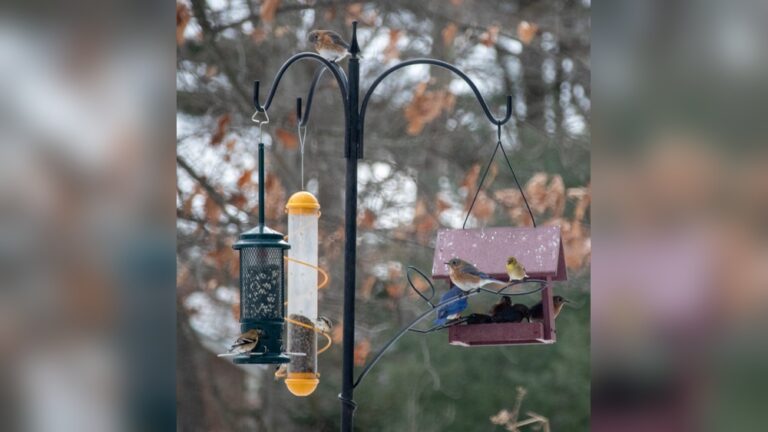A Frame Bird House
Are you looking for a simple way to invite more birds into your garden? An A Frame Bird House might be just what you need.
This charming little shelter not only adds character to your outdoor space but also provides a safe home for your feathered friends. Imagine watching colorful birds nest and sing right outside your window. You’ll discover why an A Frame Bird House is a perfect choice, how easy it is to set up, and tips to attract more birds to your yard.
Keep reading to make your garden a lively haven for birds and enjoy nature up close like never before.
Design Features
The design of an A Frame Bird House is simple but effective. It provides a safe space for birds to rest and nest. Its shape keeps rain and wind away. This helps protect the birds and their eggs. The design also looks charming in any garden or yard.
Each part of the bird house plays a role. The materials used affect its durability. The size must fit common small birds. These features work together to create a good home for birds.
Key Components
The A Frame bird house has three main parts: the roof, walls, and floor. The steep roof helps rain slide off quickly. The walls give shelter and keep wind out. The floor supports the nest and keeps it dry.
There is usually a small entrance hole. This hole lets birds enter but keeps larger animals out. Ventilation holes near the top allow fresh air to flow inside. A removable panel or roof helps with cleaning.
Materials Needed
Wood is the best material for building the bird house. Cedar or pine works well because it lasts long outdoors. Avoid using treated wood or paint inside the house. These can harm birds.
Use nails or screws to hold the parts together. Sandpaper smooths rough edges to keep birds safe. A waterproof glue helps seal joints. Hinges may be needed for a cleaning panel.
Size And Dimensions
The size of the bird house depends on the bird species. A common size is about 6 inches wide and 8 inches tall. The roof should be steep, around 45 degrees.
The entrance hole is usually 1 to 1.5 inches wide. The floor inside needs to be about 4 by 4 inches. These sizes give birds enough space without feeling exposed.

Credit: www.shelmerdine.com
Choosing The Right Location
Choosing the right location for your A Frame Bird House helps birds feel safe and comfortable. The right spot attracts more birds and keeps them happy. Consider safety, sunlight, and protection from predators. These factors create a perfect home for birds.
Safe Placement
Place the bird house where it stays steady and secure. Avoid areas with heavy wind or strong vibrations. Mount it on a sturdy tree or pole. Keep it away from busy human activity to reduce stress for birds.
Sunlight And Shade
Birds need a balance of sunlight and shade. Choose a spot that gets morning sun and afternoon shade. This keeps the bird house warm but not too hot. Too much sun can make the house uncomfortable for birds.
Predator Protection
Keep the bird house away from places where predators hide. Avoid low branches or spots near fences where cats or squirrels can reach. Use predator guards on poles for extra safety. This protects eggs and baby birds inside.
Step-by-step Building Guide
Building an A Frame Bird House is a fun project. It helps birds find a safe home. This guide shows simple steps. Follow each part carefully. You will make a sturdy and lovely bird house.
Preparing Materials
Start by gathering wood pieces. Choose smooth, untreated wood for safety. Cut two long pieces for the frame sides. Get a flat piece for the base. Also, prepare small wood pieces for the roof. Don’t forget nails or screws and glue. Have sandpaper ready to smooth edges.
Assembling The Frame
Place the two long wood pieces in an A shape. Join them at the top with a strong screw or nail. Attach the base piece between the bottom ends. Make sure the frame stands firm. Use glue to add extra strength. Check that the angles are even and steady.
Adding The Roof
Put the small wood pieces on each side of the frame. They should cover the top and sides. Fix them with nails or screws. Leave a small gap for air and light. This helps birds feel safe. Check that the roof fits well and does not leak.
Finishing Touches
Sand all rough surfaces to avoid splinters. Drill a small hole near the top for ventilation. Paint the bird house with bird-safe paint or leave it natural. Add a small perch below the entrance hole. Place the bird house in a quiet, shaded spot. Watch your new feathered friends arrive!

Credit: suncatcherstudio.com
Bird Species Attraction
The A Frame bird house offers a cozy, safe spot for many bird species. Its unique shape mimics natural nesting sites. This design attracts birds that prefer enclosed spaces. The bird house helps create a welcoming environment in your garden.
Common Visitors
Chickadees often visit A Frame bird houses. They like small, quiet spaces for nesting. Wrens also enjoy the snug fit these houses provide. They are curious birds, seeking shelter during breeding season. Nuthatches find the design ideal for protection. Bluebirds, too, may explore these houses for nesting.
Seasonal Considerations
Bird activity changes with the seasons. In spring, many birds search for nesting spots. The A Frame bird house becomes a prime location. Summer brings hatchlings needing safety from predators. Fall and winter offer shelter for resting birds. Regular cleaning keeps the house inviting year-round.
Maintenance Tips
Maintaining an A Frame Bird House keeps it safe and inviting for birds. Regular care helps prevent damage and extends the house’s life. Small efforts make a big difference in bird safety and comfort.
Cleaning Routine
Clean the bird house at least once a year. Remove old nests and debris carefully. Use warm water and mild soap to wash the inside. Rinse well and let it dry completely before using again. Cleaning stops disease and pests from spreading. Avoid harsh chemicals that can harm birds.
Repair And Upkeep
Check the bird house regularly for cracks or loose parts. Tighten screws and nails to keep it sturdy. Replace broken wood or damaged panels quickly. Sand rough edges to protect birds from injury. Paint or seal the wood every few years for weather protection. Proper upkeep keeps birds safe and encourages them to return.

Credit: www.youtube.com
Troubleshooting Common Issues
Troubleshooting common issues in an A Frame bird house keeps it safe and inviting. Small problems can stop birds from nesting. Regular checks help catch these early. Fixing problems quickly protects birds and extends the house’s life.
Pests And Predators
Pests like ants and wasps can invade the bird house. They make it hard for birds to live inside. Clean the house often. Use natural pest repellents to keep insects away. Predators such as cats and squirrels may try to reach the birds. Place the house high and away from trees. Use baffles or metal guards to block climbing animals.
Weather Damage
Rain, wind, and sun can harm the bird house. Wood may crack or rot over time. Check for loose or broken parts after storms. Apply a bird-safe sealant to protect the wood. Move the house to a sheltered spot if possible. Proper upkeep keeps the bird house sturdy and dry.
How Smart Pets Lover Can Help You with A Frame Bird House
Learning Through Building and Caring for Your A Frame Bird House
There’s something truly rewarding about crafting an A Frame Bird House with your own hands. Beyond the joy of creating a cozy home for feathered friends, this project offers practical learning opportunities that deepen your connection with nature. As you follow the step-by-step building guide, you’ll naturally gain hands-on skills in woodworking and design, while also appreciating the importance of selecting the right location to ensure the safety and comfort of visiting birds.
- Observing which bird species your house attracts can turn into an engaging lesson in local wildlife habits and behaviors.
- Regular maintenance and troubleshooting common issues teach responsibility and attentiveness—key traits for any pet parent.
At Smart Pets Lover, we believe every chirp and flutter can tell a story worth hearing. If you ever want to dive deeper or have questions about bird care or other pets, don’t hesitate to reach out. Learning to care well for your birds enriches your life and theirs, creating a shared experience full of wonder and warmth.
Frequently Asked Questions
What Is An A Frame Bird House?
An A Frame bird house has a triangular shape resembling the letter “A. ” Its design offers excellent protection from weather and predators. This shape provides good ventilation and drainage, making it ideal for small birds.
How Do I Build An A Frame Bird House?
To build an A Frame bird house, use wood panels cut into triangles. Assemble the panels to form the “A” shape. Add a floor, entrance hole, and ventilation. Finish with non-toxic paint or sealant for durability.
Which Birds Prefer A Frame Bird Houses?
Small cavity-nesting birds like chickadees, wrens, and finches prefer A Frame bird houses. The design suits these birds due to its cozy interior and protective structure. It attracts various species seeking shelter.
Where Should I Place My A Frame Bird House?
Place your A Frame bird house in a quiet, shaded area. Mount it 5 to 10 feet above ground. Avoid direct sunlight and strong winds. Ensure it’s near trees or shrubs for bird safety and comfort.
Conclusion
A frame bird houses offer a cozy spot for birds to rest. They are easy to build and fit well in many gardens. These houses help birds stay safe from weather and predators. Watching birds visit your birdhouse brings joy and peace.
Try adding one to your outdoor space today. Small steps like this support nature and brighten your home. Simple, useful, and charming – a frame bird house is a great choice.







